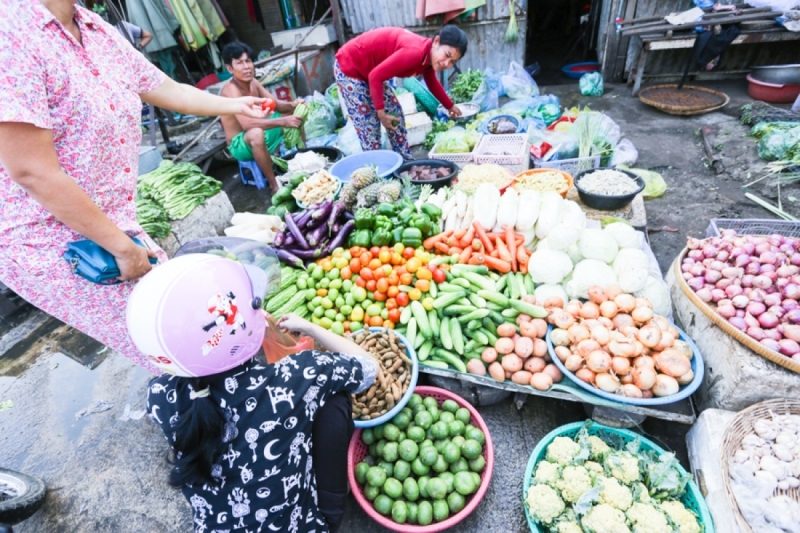




Local vegetable farmers in Cambodia are having it tough. In a laissez-faire market characterized by gluts and frequent supply shortages, coupled with cheap imports from neighboring countries, many vegetable growers complain that they are on the verge of going broke.
Lamenting his loss of income, Peng Srean of Sa Ang district in Kandal province showed Khmer Times his cauliflowers that he could not sell and are now rotting.
“Most consumers prefer the cheaper ones from Vietnam, which are grown using chemical fertilizers and look much ‘prettier’. When they see the same cauliflowers grown locally, they tend to thumb their noses at them – saying they look ugly and are expensive,” he said.
“At this rate, I think I’m going to go broke. How can I compete with the cheaper ones from Vietnam?” asked the farmer.
Mr. Srean said his cost of production was high and if he sold his cauliflowers at a lower price to compete with the Vietnamese imports, he would suffer heavy losses.
“I just don’t understand why people prefer to buy these imported vegetables, when they very well know that they are grown using lots of chemicals,” he said, shaking his head.
Veth Oen is a gourd farmer in Sa Ang district’s Peam Sala village, and like Mr. Srean, he, said it was only a matter of time before he went broke.
“I have great difficulty selling my harvested gourds in the market. Potential buyers always complain that my prices are higher than the better-looking ones from Vietnam,” he said.
“What can I do? Maybe I’ll just give up planting vegetables and let fate decide if my wife and I will live or die.”
Research conducted by the Center for Policy Studies’ program shows that 200 to 400 metric tons of vegetables are imported daily from neighboring countries. The research also found that between $150 million and $250 million is spent annually on vegetable imports from Vietnam, Thailand and China.
In a bid to curb the huge capital outflow, the government has designated eight provinces to start boosting vegetable production from this year in a project called Boosting Food Projection 2017-2019. The project has a budget of some $20 million, of which about $10 million is for the production of vegetables and other crops.
When told of this project, vegetable famer Mr. Oen said he was pleased that the government was finally taking things seriously.
“Here’s a ray of hope,” he said.
“Local people will choose Cambodian-produced vegetables if the amount of imported vegetables is less in the market. Imports of vegetables that cannot be grown in the country is okay but flooding the market with every kind of vegetable is just ridiculous.”
Sar Sopheng, an eggplant farmer in Sa Ang district’s Toul Andong village, said he will increase his production if the government guarantees that it would make efforts to stem the flow of imports from Vietnam.
“Currently we supply up to 500 kilograms to the wholesale markets in Phnom Penh, and demand seems to be growing. But the influx of cheaper eggplants from Vietnam is always a spoiler that causes wholesalers to cut down on their purchases from local vegetable growers.”